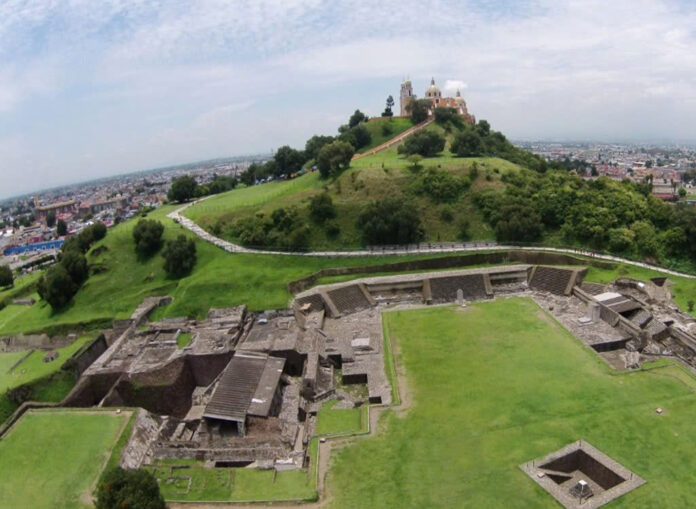A Colossal Secret Beneath Cholula’s Hills

In the heart of Mexico lies a monument of staggering proportions, quietly challenging our perceptions of ancient architecture. The Great Pyramid of Cholula, known locally as Tlachihualtepetl or “man-made mountain,” stands as a testament to human ingenuity and the passage of time.
A Monument Overshadowed by History
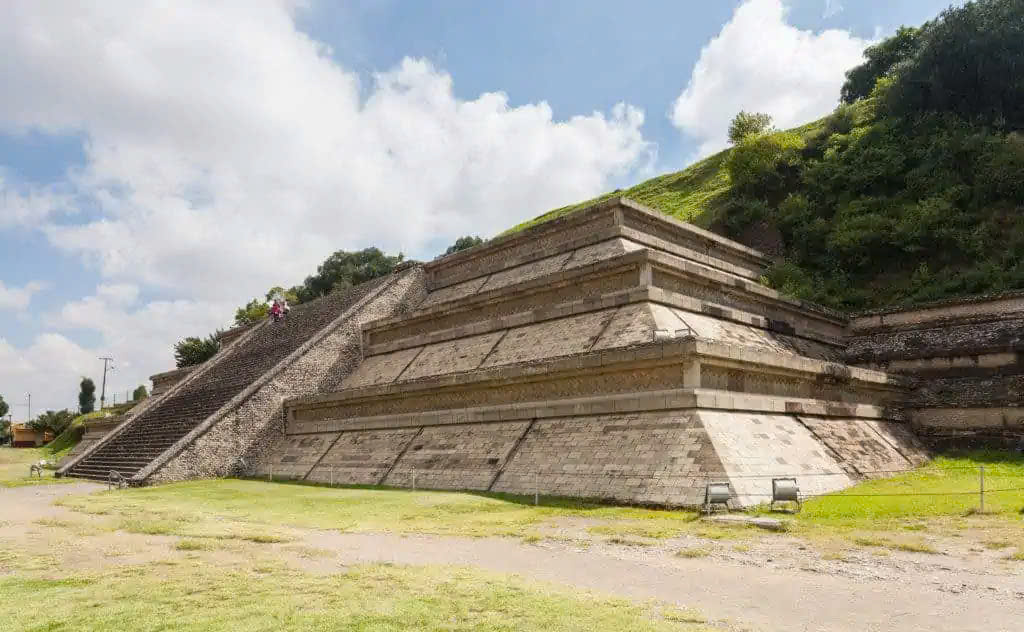
While the Great Pyramid of Giza often claims the spotlight in discussions of ancient wonders, the pyramid at Cholula silently dwarfs its Egyptian counterpart. With a base four times larger and a volume nearly twice that of Giza’s largest pyramid, Cholula’s hidden giant measures an impressive 66 meters (216 feet) in height and 450 meters (1,475 feet) in width.
The Veil of Time and Nature

What makes this 2,400-year-old structure truly remarkable is its camouflage. Unlike its bare stone cousins in Egypt, the Great Pyramid of Cholula slumbers beneath a blanket of grass, trees, and soil. This natural disguise proved so effective that it fooled even the keen eyes of Spanish conquistadors during their 1519 invasion.
A City of Sacred Significance
Cholula: The Holy City of the Aztecs
At its peak, Cholula was a thriving metropolis of 100,000 inhabitants, second only to Tenochtitlan in the Aztec Empire. Renowned for its markets and fine goods, the city’s spiritual significance was manifested in its ambitious goal to build a holy pyramid for each day of the year.
The Pyramid’s Unexpected Guardian
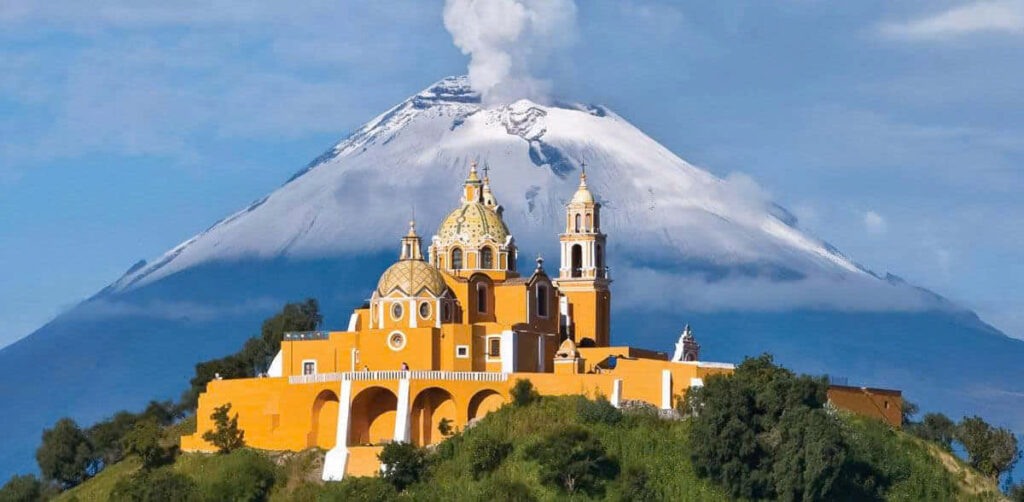
In a twist of historical irony, the Spanish invaders unknowingly contributed to the pyramid’s preservation. After Hernán Cortés and his men devastated the city, they erected a small church atop what they perceived as a natural hill. This church, Iglesia de Nuestra Señora de los Remediosa, became an unintentional protector of the ancient structure beneath.
Rediscovery and Modern Challenges
Unearthing the Sleeping Giant

The pyramid’s true nature remained a secret until 1910 when local construction efforts unexpectedly revealed its hidden form. This discovery sparked archaeological interest and eventually led to the creation of a network of tunnels that now allow visitors to explore the ancient wonder.
A Monument of Mud and Legend
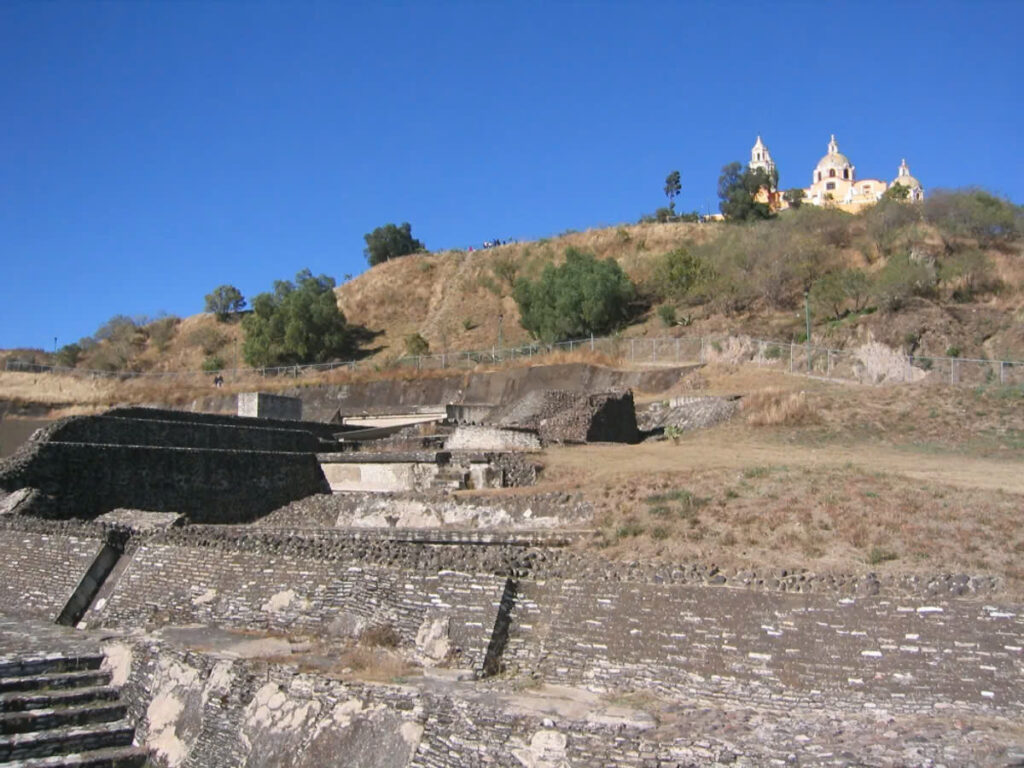
Built primarily from adobe bricks, the pyramid’s composition played a crucial role in its concealment. The structure’s mud-based construction provided a fertile foundation for vegetation, allowing nature to reclaim and disguise the man-made mountain over centuries.
Preserving the Past for the Future
Today, Cholula faces a new challenge: balancing the preservation of its archaeological treasure with the demands of modern tourism. As one of Mexico’s most important pilgrimage sites, the city and its great pyramid must navigate the delicate balance between accessibility and conservation.
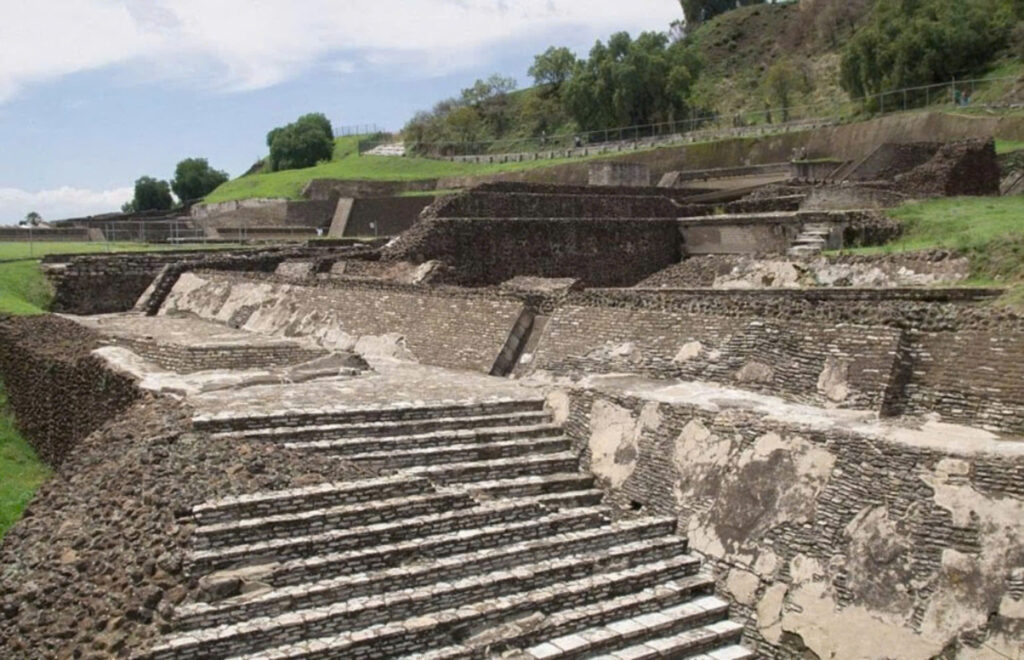
The Great Pyramid of Cholula stands as a reminder of the ingenuity of ancient civilizations and the secrets that may still lie hidden beneath the earth’s surface. Its story is one of resilience, rediscovery, and the ongoing dialogue between past and present.
